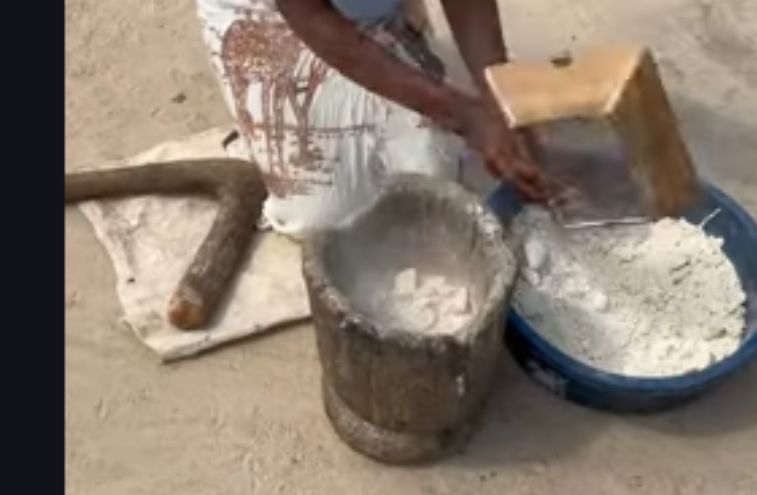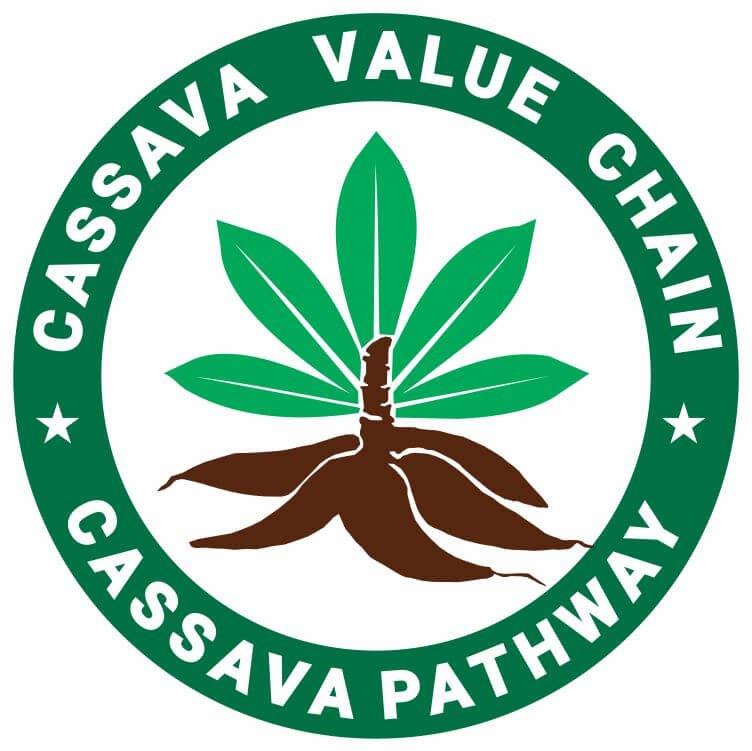The traditional method of making cassava flour: peeling, fermenting, drying, and pounding, was a time-honored craft. But why did our ancestors swear by it? Discover the secrets behind this ancient technique!
The traditional method of making cassava flour carries deep cultural roots, connecting you to generations who have perfected the craft.
The process is more than just turning cassava into flour, it’s a skill passed down through time, preserving flavors and textures that industrial methods often strip away.
You might not realize it, but every step matters: peeling, washing, drying, and grinding work together to create a flour that’s safer, richer in taste, and packed with nutrients.
Unlike factory processing, which prioritizes speed, traditional methods keep the essence of the cassava intact.
As modernization reshapes food production, these time-honored techniques risk fading away.
Understanding their value helps protect not just a culinary tradition but also the agricultural wisdom that sustains it. See all the methods of making cassava flour.
Recommended: Everything to Know about Cassava

Table of Contents
- Selecting and Harvesting Cassava
- Peeling and Cleaning the Cassava
- Drying for Storage
- Pounding or Milling, and Sieving the Dried Cassava
- Storage and Preservation
- Why You Should Choose Traditionally Made Cassava Flour
- Conclusion
Selecting and Harvesting Cassava
- Choosing the Right Cassava Variety: The type of cassava you choose affects the quality of your flour. Some varieties produce more starch, while others have lower cyanide content, making them safer to eat. High-starch types like Manihot esculenta are preferred for their better processing properties.
- Knowing When to Harvest: Timing matters. Cassava roots reach peak maturity between 8 and 24 months, depending on the variety. You’ll know they’re ready when they feel firm, have smooth skin, and grow to a good size. Leaving them in the ground too long can make them woody and reduce starch quality. More on how to know cassava is ready for harvesting.
- Harvesting with Care: To avoid damaging the roots, use a hoe or similar tool to loosen the soil before pulling them up. Check each root for disease or insect damage, only healthy ones should move forward in the process. Cleaning them immediately removes dirt and prepares them for drying and grinding. See more on how to harvest cassava the right way.
Selecting the right variety and harvesting at the right time ensures better flour texture, taste, and safety.
Related: What is the Modified Cassava Flour?
Peeling and Cleaning the Cassava

- Preparing the Roots: Before you turn cassava into flour, the roots need proper handling. Fresh cassava should be firm and free from blemishes. Start by trimming both ends to make peeling easier.
- Peeling with Precision: Cassava skin is thick and tough, requiring a steady hand. A sharp knife or machete works best. Make shallow cuts along the length of the root and peel away the skin in long strips. Be careful not to remove too much flesh, this reduces waste and keeps the flour yield high.
- Washing for Safety: Once peeled, cassava must be thoroughly washed. Rinse the roots under running water or soak them in large bowls to remove dirt and harmful compounds. This step ensures the flour is safe to consume and free from toxins.
Related: Everything to Know about the Cassava Flour Bread
Drying for Storage

Sun-drying or using a dehydrator ensures long shelf life and prevents spoilage. This process also reduces harmful cyanogenic compounds, making the flour safer to eat. Once fully dried, the cassava is ready to be milled into flour.
Related: How High-Quality Cassava Flour (HQCF) is Made
Pounding or Milling, and Sieving the Dried Cassava

In the traditional method of producing cassava flour, before milling, make sure your cassava is properly dried to the right moisture level.
Once dried, chop the cassava into smaller pieces to make the milling process easier.
Traditional methods involve pounding the dried cassava using a mortar and pestle. This method keeps the flour’s integrity intact while releasing the starches, resulting in a finer texture.
Milling and Sieving Process
Once you’ve pounded the dried cassava, use a sieve to separate the finer flour from larger pieces.
The sieve’s fine mesh ensures you get consistent flour. Any remaining coarse particles can be re-pounded for refinement.
This step is important for making sure the flour is smooth and even.
Adjusting the Sieving Based on Use

The fineness of the flour depends on what you plan to use it for. Some recipes may call for finer flour, while others may need a coarser texture.
Traditional milling and sieving allow you to tailor the flour’s texture to suit different culinary needs, showing how skilled artisans can adapt the process for a variety of dishes.
By milling and sieving the dried cassava, you’re not only ensuring the quality of the flour but also connecting with the tradition of cassava flour production.
Related: Making Cassava Flour the Fermentation Way
Storage and Preservation
- Keep It Dry: Cassava flour is sensitive to moisture, which can lead to spoilage or mold. To keep it fresh, store it in airtight containers. Glass jars or plastic containers with tight-fitting lids work well. These containers keep air and moisture out, preserving the flour’s quality.
- Traditional Storage Methods: If you prefer traditional methods, woven baskets or clay pots have been used for years to store cassava flour. These options allow some airflow but still protect against moisture. Just make sure the materials don’t affect the flavor or smell of the flour.
- Shelf Life and Preservation: When stored properly, cassava flour can last up to a year in airtight containers. Keep it in a cool, dark place away from sunlight to extend its shelf life. In humid climates, refrigeration can help. You can also freeze cassava flour to make it last even longer, ensuring you have it on hand for future use.
By following these tips for storing and preserving cassava flour, you can keep it fresh and ready for your next recipe.
Related: Industrial Method of Producing Casava Flour
Why You Should Choose Traditionally Made Cassava Flour
The Traditional Process Makes a Difference
This traditional method gives the flour its rich flavor and unique texture, setting it apart from modern, processed versions.
When compared to the refined version, traditionally made cassava flour retains more of its natural taste and nutritional value.
Delicious Traditional Dishes
One of the most popular dishes made with cassava flour is “fufu.” It’s a common staple in African cuisine, made by boiling cassava flour in water until it forms a smooth, dough-like texture. This dish pairs perfectly with soups and stews.
The traditional cassava flour adds a dense, chewy texture that modern versions simply can’t match.
Another dish, “cassava cake,” a sweet dessert, benefits from the moistness and full flavor of the traditionally made flour.
A Better Option for Baking and Gluten-Free Recipes
Traditionally made cassava flour adds a richer taste and varied texture to baked goods.
Whether you’re making pancakes, bread, or other gluten-free dishes, this flour binds ingredients well, ensuring a more satisfying result.
Modern processing can strip away the flour’s natural qualities, leading to a lighter, less flavorful product.
The True Taste of Cassava Flour
Incorporating traditionally made cassava flour into your cooking and baking ensures an authentic flavor and texture.
This flour brings more to the table than its processed counterparts, making your dishes stand out. Try it in your recipes for a richer, more satisfying taste.
Conclusion
The traditional method of making cassava flour is a process that connects you to cultural heritage and sustainable practices.
Through peeling, washing, and drying cassava, you’re not just creating a product but preserving a time-tested tradition passed down through generations.
This method supports local resources, strengthens communities, and promotes biodiversity.
By engaging in these practices, you help keep alive valuable culinary skills and cultural identities.
Participating in these traditions enriches your cooking, deepens your connection to the past, and ensures that the knowledge and benefits of cassava flour endure for years to come.

Chimeremeze Emeh is a writer and researcher passionate about Africa’s most transformative root crop—cassava. Through his work at cassavavaluechain.com, he explores the entire cassava industry, from cultivation and processing to its diverse applications in food, health, and industrial use.
He also writes for palmoilpalm.com, where he shares his extensive experience and deep-rooted knowledge of palm oil, covering red palm oil, palm kernel oil, and refined products. His work there reflects his lifelong connection to agriculture and his commitment to promoting sustainable value chains in Africa.
Driven by curiosity and purpose, Chimeremeze aims to shed light on how cassava continues to empower communities, strengthen food systems, and link traditional farming wisdom with modern innovation.
